Abstract
A dichotic monitoring test for the lateralisation of speech dominance was compared with testing for dysphasia after unilateral electroconvulsive therapy to each side of the head in 31 patients, and the intracarotid amylobarbitone test in four epileptic patients. Twenty-eight patients shown to be left speech dominant also showed right ear advantages in the dichotic test. Four of the five right speech dominant patients showed left ear advantages. Two patients with bilateral speech representation showed nonsignificant ear asymmetries. The noninvasive dichotic monitoring task is quick and simple and produces large mean ear advantages (14 to 25%) in normal subjects as well as patients.
Full text
PDF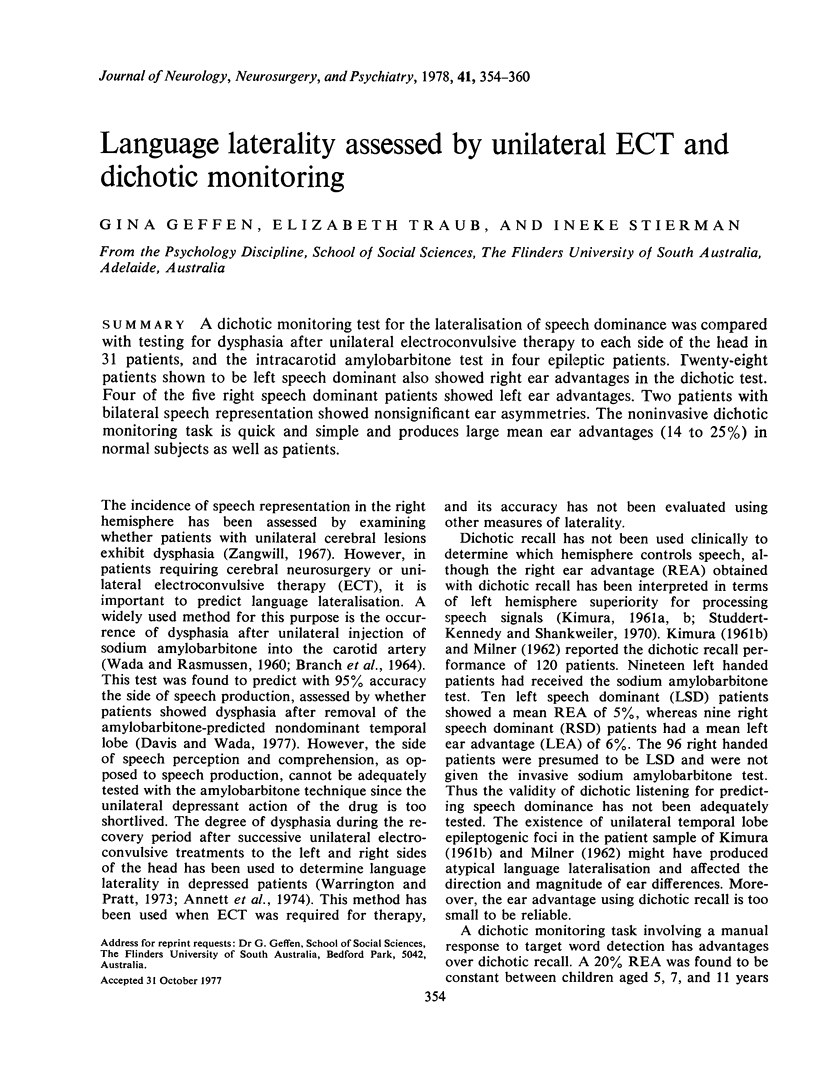
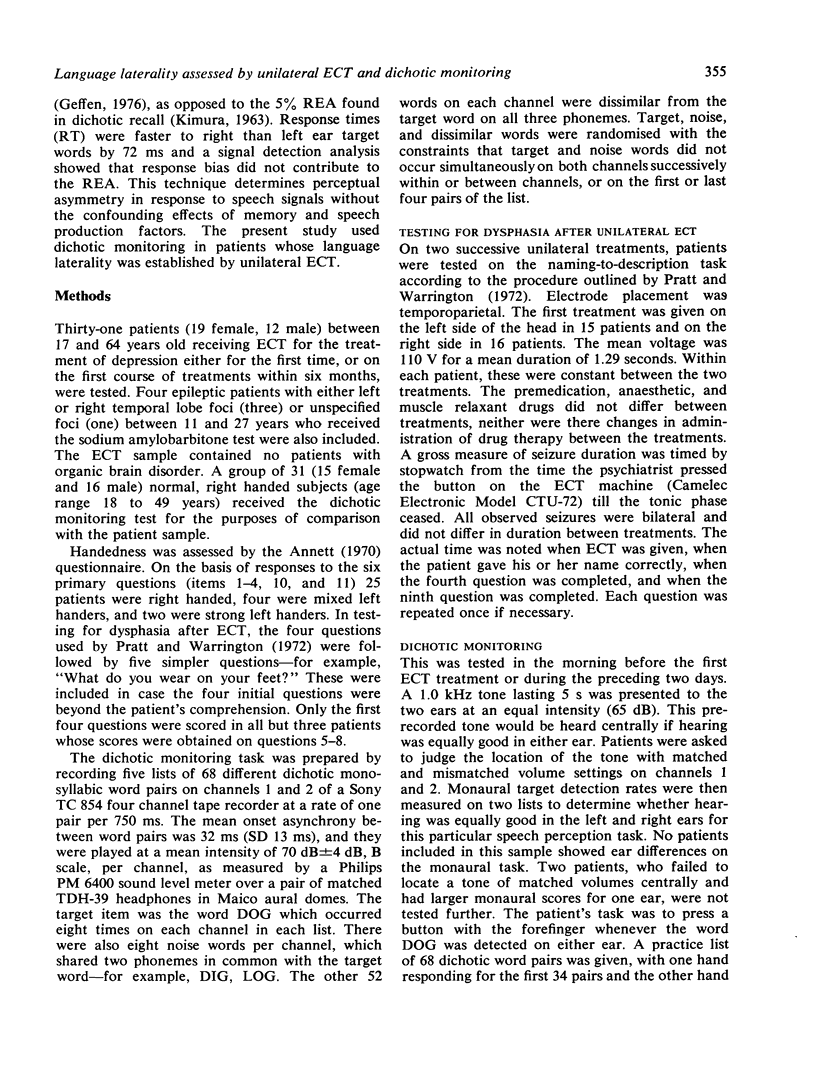
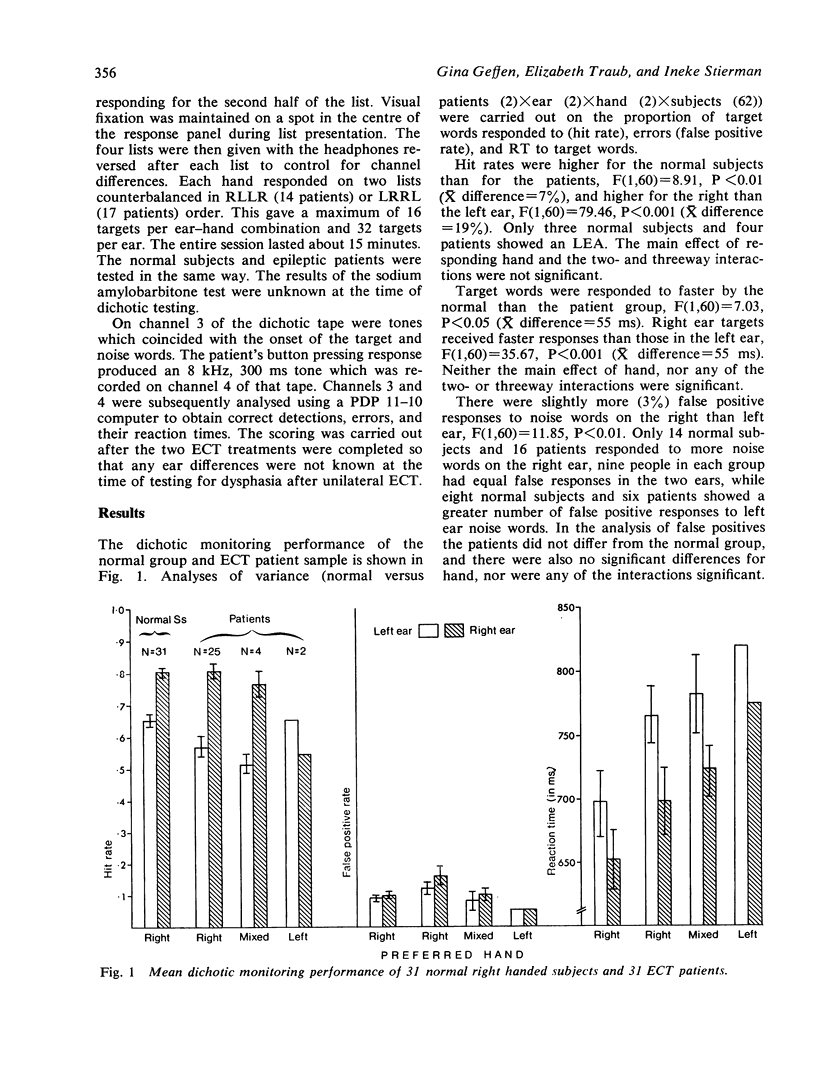
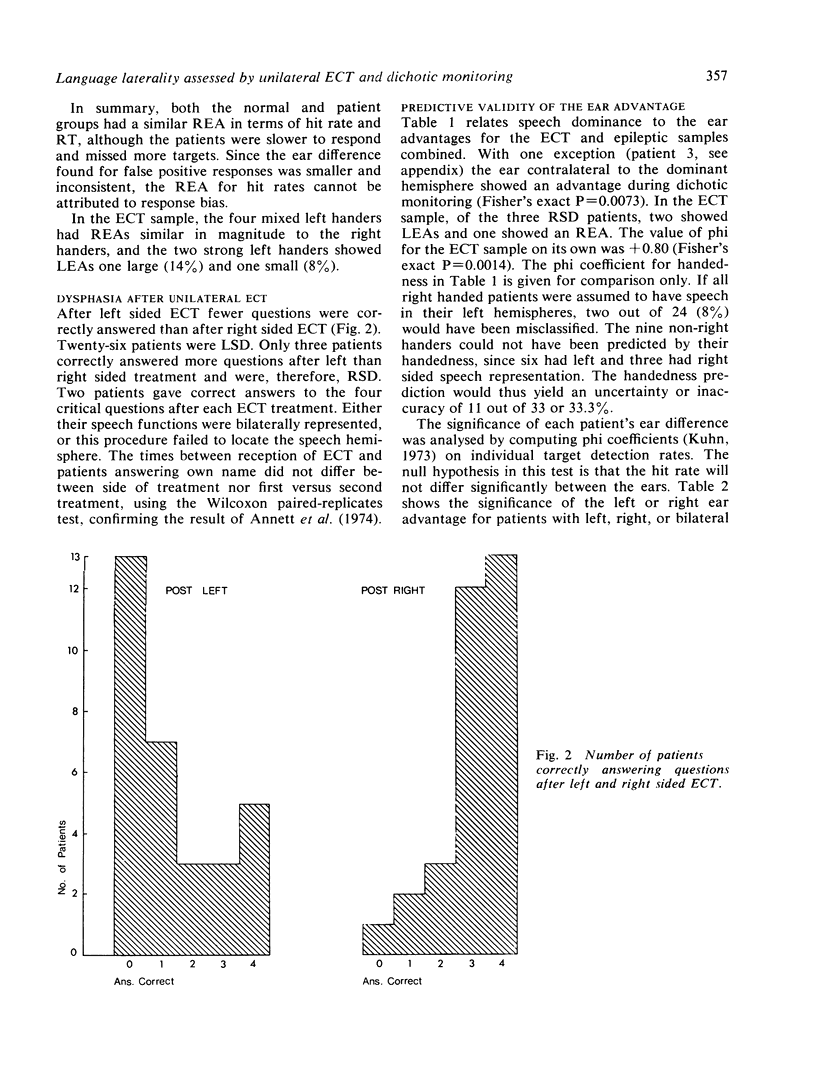

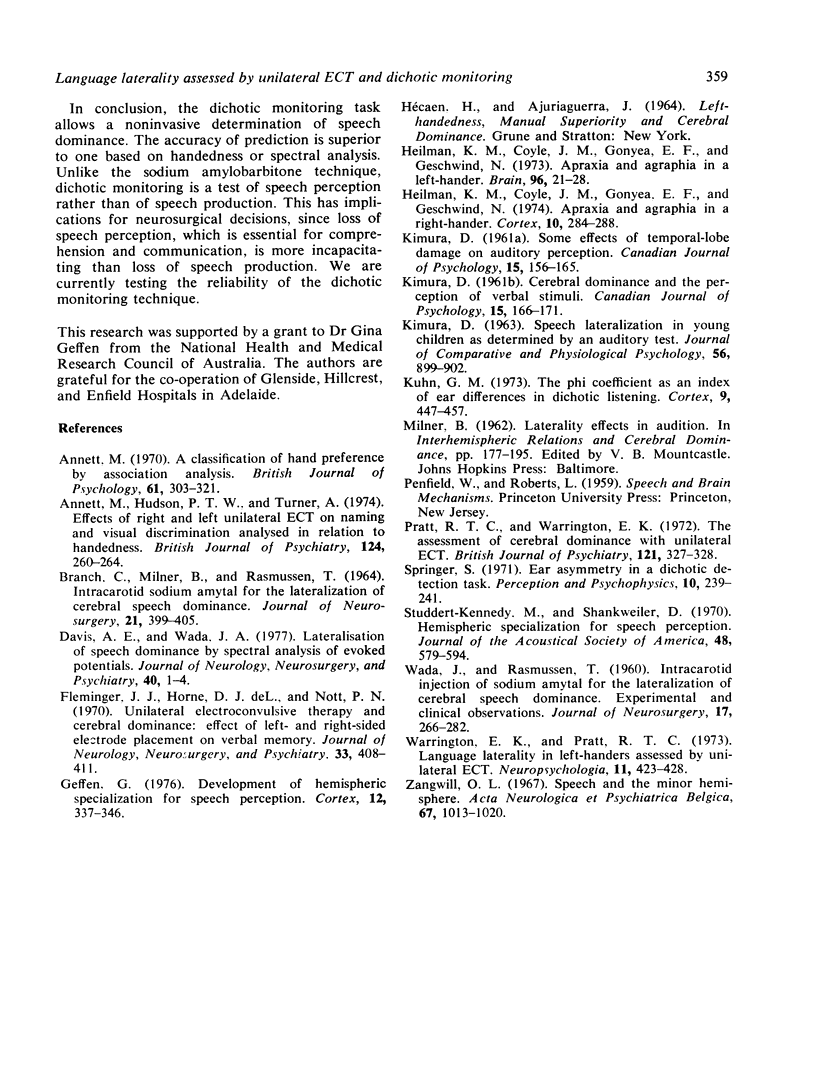
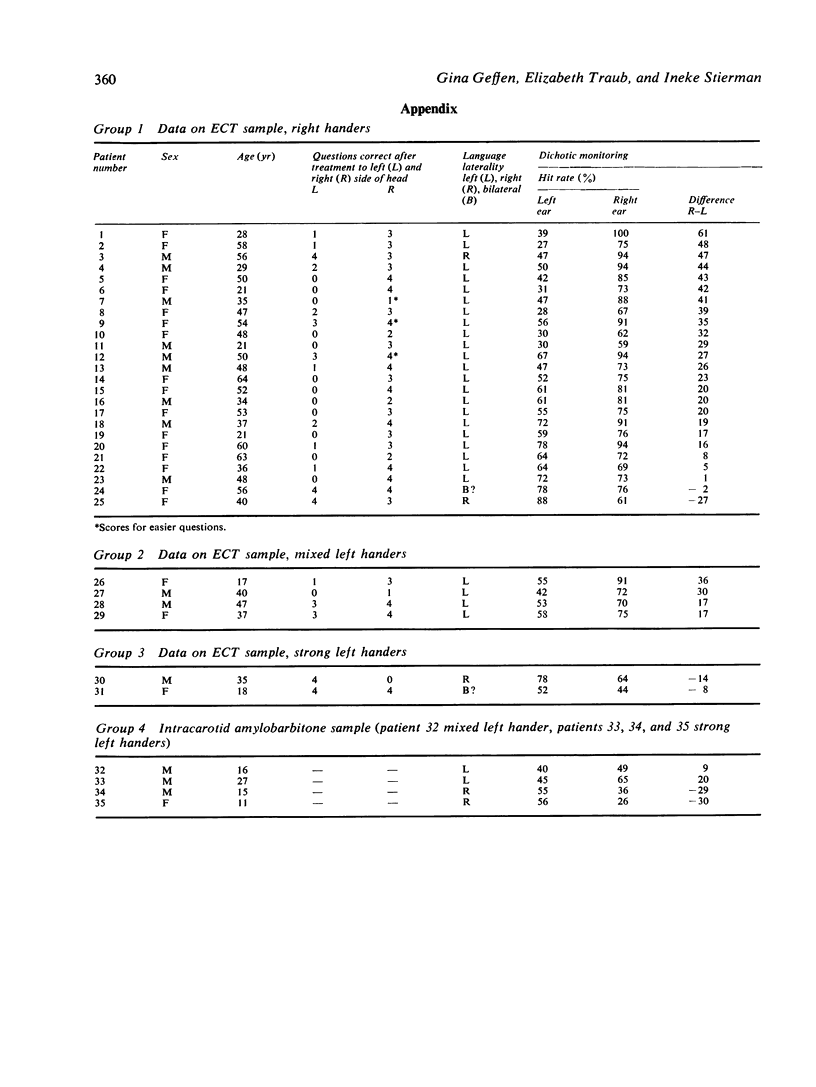
Selected References
These references are in PubMed. This may not be the complete list of references from this article.
- Annett M. A classification of hand preference by association analysis. Br J Psychol. 1970 Aug;61(3):303–321. doi: 10.1111/j.2044-8295.1970.tb01248.x. [DOI] [PubMed] [Google Scholar]
- Annett M., Hudson P. T., Turner A. Effects of right and left unilateral ECT on naming and visual discrimination analysed in relation to handedness. Br J Psychiatry. 1974 Mar;124(0):260–264. doi: 10.1192/bjp.124.3.260. [DOI] [PubMed] [Google Scholar]
- BRANCH C., MILNER B., RASMUSSEN T. INTRACAROTID SODIUM AMYTAL FOR THE LATERALIZATION OF CEREBRAL SPEECH DOMINANCE; OBSERVATIONS IN 123 PATIENTS. J Neurosurg. 1964 May;21:399–405. doi: 10.3171/jns.1964.21.5.0399. [DOI] [PubMed] [Google Scholar]
- Fleminger J. J., de Horne D. J., Nott P. N. Unilateral electroconvulsive therapy and cerebral dominance: effect of right- and left-sided electrode placement on verbal memory. J Neurol Neurosurg Psychiatry. 1970 Jun;33(3):408–411. doi: 10.1136/jnnp.33.3.408. [DOI] [PMC free article] [PubMed] [Google Scholar]
- Geffen G. Development of hemispheric specialization for speech perception. Cortex. 1976 Dec;12(4):337–346. doi: 10.1016/s0010-9452(76)80037-8. [DOI] [PubMed] [Google Scholar]
- Heilman K. M., Coyle J. M., Gonyea E. F., Geschwind N. Apraxia and agraphia in a left-hander. Brain. 1973;96(1):21–28. doi: 10.1093/brain/96.1.21. [DOI] [PubMed] [Google Scholar]
- Heilman K. M., Gonyea E. F., Geschwind N. Apraxia and agraphia in a right-hander. Cortex. 1974 Sep;10(3):284–288. doi: 10.1016/s0010-9452(74)80021-3. [DOI] [PubMed] [Google Scholar]
- KIMURA D. SPEECH LATERALIZATION IN YOUNG CHILDREN AS DETERMINED BY AN AUDITORY TEST. J Comp Physiol Psychol. 1963 Oct;56:899–902. doi: 10.1037/h0047762. [DOI] [PubMed] [Google Scholar]
- KIMURA D. Some effects of temporal-lobe damage on auditory perception. Can J Psychol. 1961 Sep;15:156–165. doi: 10.1037/h0083218. [DOI] [PubMed] [Google Scholar]
- Kuhn G. M. The PHI coefficient as an index of ear differences in dichotic listening. Cortex. 1973 Dec;9(4):450–457. doi: 10.1016/s0010-9452(73)80043-7. [DOI] [PubMed] [Google Scholar]
- Pratt R. T., Warrington E. K. The assessment of cerebral dominance with unilateral ECT. Br J Psychiatry. 1972 Sep;121(562):327–328. doi: 10.1192/bjp.121.3.327. [DOI] [PubMed] [Google Scholar]
- Studdert-Kennedy M., Shankweiler D. Hemispheric specialization for speech perception. J Acoust Soc Am. 1970 Aug;48(2):579–594. doi: 10.1121/1.1912174. [DOI] [PubMed] [Google Scholar]
- Warrington E. K., Pratt R. T. Language laterality in left-handers assessed by unilateral E.C.T. Neuropsychologia. 1973 Oct;11(4):423–428. doi: 10.1016/0028-3932(73)90029-8. [DOI] [PubMed] [Google Scholar]
- Zangwill O. L. Speech and the minor hemisphere. Acta Neurol Psychiatr Belg. 1967 Nov;67(11):1013–1020. [PubMed] [Google Scholar]


